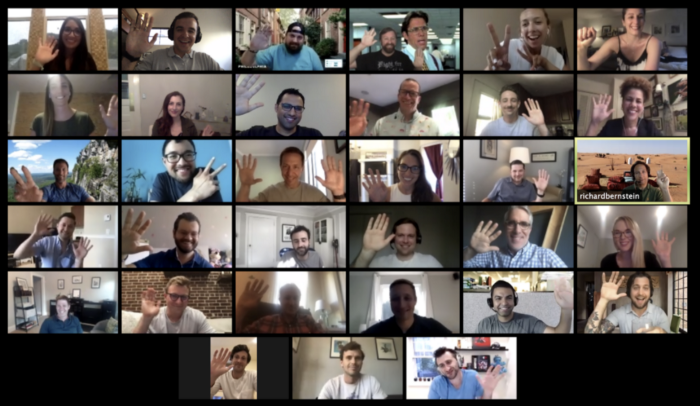Updated: Mar 30
This article was written by Tai Rattigan, Co-Founder – Chief Marketing and Strategy Officer at Partnership Leaders
Spotlight: Account Mapping is part of our Spotlight: series which seeks to surface the best ways to build partnerships for the highest impact.
Great account mapping sets the foundation for an effective co-selling motion with partners. It can also be a time-intensive exercise which slows down a partnership and sets the wrong expectations when done incorrectly. Which is why we made it the first topic in our Spotlight: series.
Effective Account Mapping with Partners can help with:
- Quickly identifying new revenue opportunities
- Aligning key stakeholder between your companies
- Prioritizing which partners to focus on and how to work together for impact
With >500 of the best partnership leaders in tech within our Partnership Leaders community we set out to answer once and for all — what is the best way to successfully account map with partners?
Throughout the course of 3 months, we held expert roundtables, interviewed practitioners, and surveyed our community, here is what we learned.
Account Mapping expert roundtables

Travis Bradley got together 40 of the brightest minds in partnerships for virtual round tables on the best way to tackle Account Mapping. The key takeaways were:
1. Setting expectations up front is key
- Before going through account mapping with a partner, make sure you’ve agreed on the deliverables from both sides, what the next steps after account mapping and you are aligned on what the ideal outcomes are.
- Sharing context and expectations with the other stakeholders in the process is often an afterthought, but is where the most time should be spent for success — since that’s where the impact happens.
- Setting up sales reps for the conversation is critical, make sure that they understand the integrated value prop, they have a clear ask on what they want out of the conversation and are ready to reciprocate (introductions; account intel, etc).
2. Build momentum in the partnership
- Develop narratives of success by showcasing sales reps who win deals due to partners. Build out case studies which show customers are benefitting from the integrated solution. Repeat these wins early and often.
- If you are struggling with AEs, try to do enablement with the Success team. Build them a “How to pitch the integrated solution” slide deck or 1-pager which includes Questions to ask; topics to listen for; key benefit statements; joint customers; a mini case study from a customer win.
- Remove Friction in the process wherever it exists. Provide collateral for customers; create joint Slack channels; get both partners on a single contract if you can. Strip out roadblocks and steps in the process to make this the path of least resistance for everyone involved.
3. Prioritization and focus
- Timing is important. Thinking about the compelling event driving the partnership, do you have customers looking for something this partner can provide? Are there customers nagging them for integrations or an easier way to work together?
- Meet with AEs to go through their account and find where they need help and balance it with accounts where they can help the partner. Since you just gave that AE a few opps where the partner can help them, they will be more willing to help out.
- Choose the right partners for your maturity. Working with large strategic partners like AWS or Accenture might be aspirational goals for you and your exec team but these partnerships require a lot of resources, time and sophistication to be successful.
4. Tools can help free up time for to give a white-glove experience
- Tools like Crossbeam and Sharework are helping automate much of the manual admin work, however, they are still relatively new in the market and most people are using spreadsheets and manually mapping accounts and owners which is time-consuming and complex.
- Each partner is unique; so you can bring a playbook and preferred tool but will need to flex depending on your partner’s DNA and the individual partner manager (e.g. more technical; more salesy, etc). Freeing up some of the admin time can allow for customization where it matters.
Expert Interviews
Next, Shohei Narron assembled a group of 5 experts in executive and practitioner roles at leading technology companies to share their perspectives on how account mapping can supercharge a partner co-sell motion. Click the titles for the full interviews and see some takeaways below.
Chris Formosa — Technology Partnerships at Full Story
“You absolutely need to do your homework to ensure your rep knows how the joint-solution can help the opportunity; what’s in it for them and the partner.”
Toni Rothpletz — Director, Channel Sales & Strategic Partnerships at Tealium
“Knowing which sales rep is partner-friendly or not is very important. Help them be successful — introductions based on territories is a good rule of thumb since it’s much easier to find more overlaps between that rep and your partner reps.”
Billy Robins — Head of Partnerships at Product Board
“Make sure you document partner wins internally…if it’s a more official write-up by the marketing team, make sure any tidbits about partner involvement is included… don’t forget to look for smaller wins you can highlight, like how partner involvement helped a potential churn risk account come around.”
Carina Shahin — Partner Account Manager at Sendoso
“Make sure you’re casting a wide net to capture partner involvement. For example, do your leads have a place to indicate that a partner sent them to your demo request? If not, you’re missing out on a lot of leads that could’ve been attributed to your partnership activities, and nobody is aware of them.”
Alexander Shyshko — Partnerships at ON24
“Account mapping isn’t just about figuring out mutual customers, but also an establishment of trust…you need to make sure both parties agree on how introductions will be made and the rules of engagement.”
Partnership Leaders Survey
Finally, Adam Michalski wrapped up the quarter sharing some data from a survey we ran within the Partnership Leaders community where we gained insights like –
Despite new technology available, >50% of participants are using Excel or Google Sheets for account mapping today.
Most teams are account mapping with partners quarterly, despite having access to real-time Slack channels etc.
What’s next?
In Q3 we’re going to tackle how teams are measuring the success of Partnerships, both at the partner level and the way partnership teams report to their company executive leadership.
If you’d like to participate as an interviewee or on one of our roundtables please reach out to info@partnershipleaders.com and we’d be happy to hear your perspectives!
Look out for announcements on the Spotlight: Measuring Success activities coming soon.
About Partnership Leaders
Partnership Leaders is the industry association for Partnerships, Channel, Alliances, and Business Development leaders. The association’s mission is to elevate the role of partnership leaders at their companies and provides a vibrant online community, virtual events, curated professional networking opportunities, and educational resources to drive success for our members.
The community can be joined through the referral of an existing member or by application. Please feel free to visit our website for more information.

